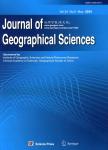Evolution of the gravel-bedded anastomosing river within the Qihama reach of the First Great Bend of the Yellow River
黄河第一湾齐哈玛河段砾质网状河1990年以来的演变特征(英文)作者机构:Key Laboratory of Water Cycle and Related Land Surface Processes Institute of Geographic Sciences and Natural Resources Research CAS College of Resources and Environment University of Chinese Academy of Sciences
出 版 物:《Journal of Geographical Sciences》 (地理学报(英文版))
年 卷 期:2019年第29卷第2期
页 面:306-320页
核心收录:
学科分类:07[理学]
基 金:National Natural Science Foundation of China No.41571005 No.41271027
主 题:gravel-bedded anastomosing river anastomosing belt wetlands talweg sediments Yellow River
摘 要:The anastomosing river that is present within the First Great Bend of the Yellow River is different from other sand-bedded rivers of this type because it contains gravel-bedded materials. It is therefore important to determine whether, or not, the specific characteristics of this anastomosing river are similar to those seen in sand-bedded forms, including the characteristics of erosion and deposition, and the stability of channel and interchannel wetlands. Four Landsat images from 1990, 2001, 2013, and 2016 alongside two Google Earth(GE) images from 2011 and 2013 were utilized in this study in tandem with field sampling and observations to select a 12 km main channel length section of the Qihama reach anastomosing river. This section was then used to determine variations in channel planform and sedimentary characteristics over a 26 year period. The results of this study show that this gravel-bedded anastomosing river has exhibited a high degree of stability overall, and that there has been no obvious channel and wetland bank erosion and deposition. Data also show that over the 26 years of this study, anastomosing belt area increased by 2.43%, while the ratio of land to water area remained almost equal. The number of wetlands has also increased along this river section at a rate as high as 62.16% because of the fragmentation of some small interchannel examples, while the talweg has alternately migrated to either the left or right over long periods of time at a relatively stable rate. Indeed, as a result of the migration of this line, there has been significant turnover in the number of islands within the main channel while bank shift has occurred at a rate of about 5 m/yr. The numerous anastomosing channels within this river section remained very stable over the course of this study, characterized by a mean annual migration rate of just 1 m/yr, while the sediments in bank columnar sections are mainly composed of fine sands or silts with a relatively high clay content



